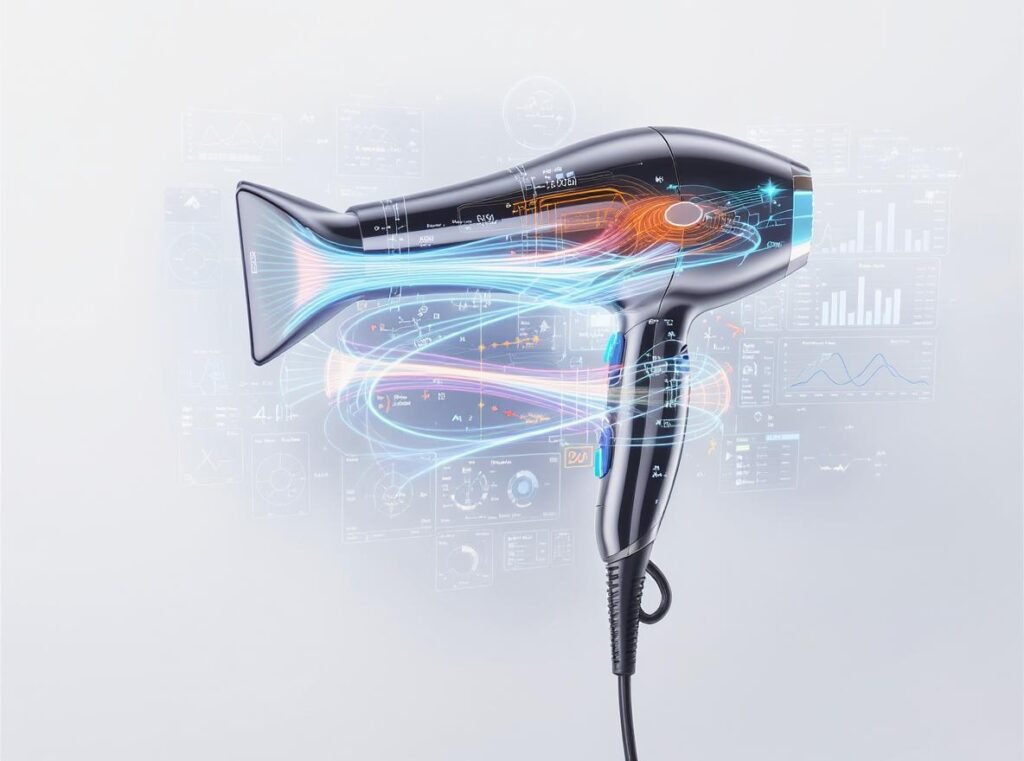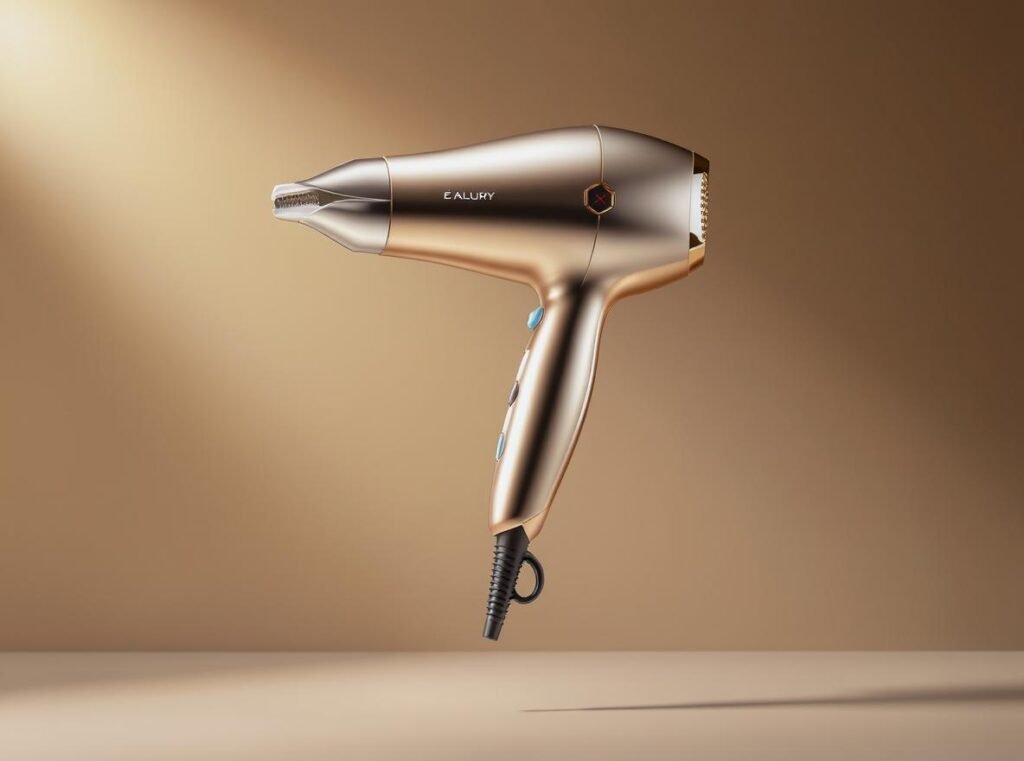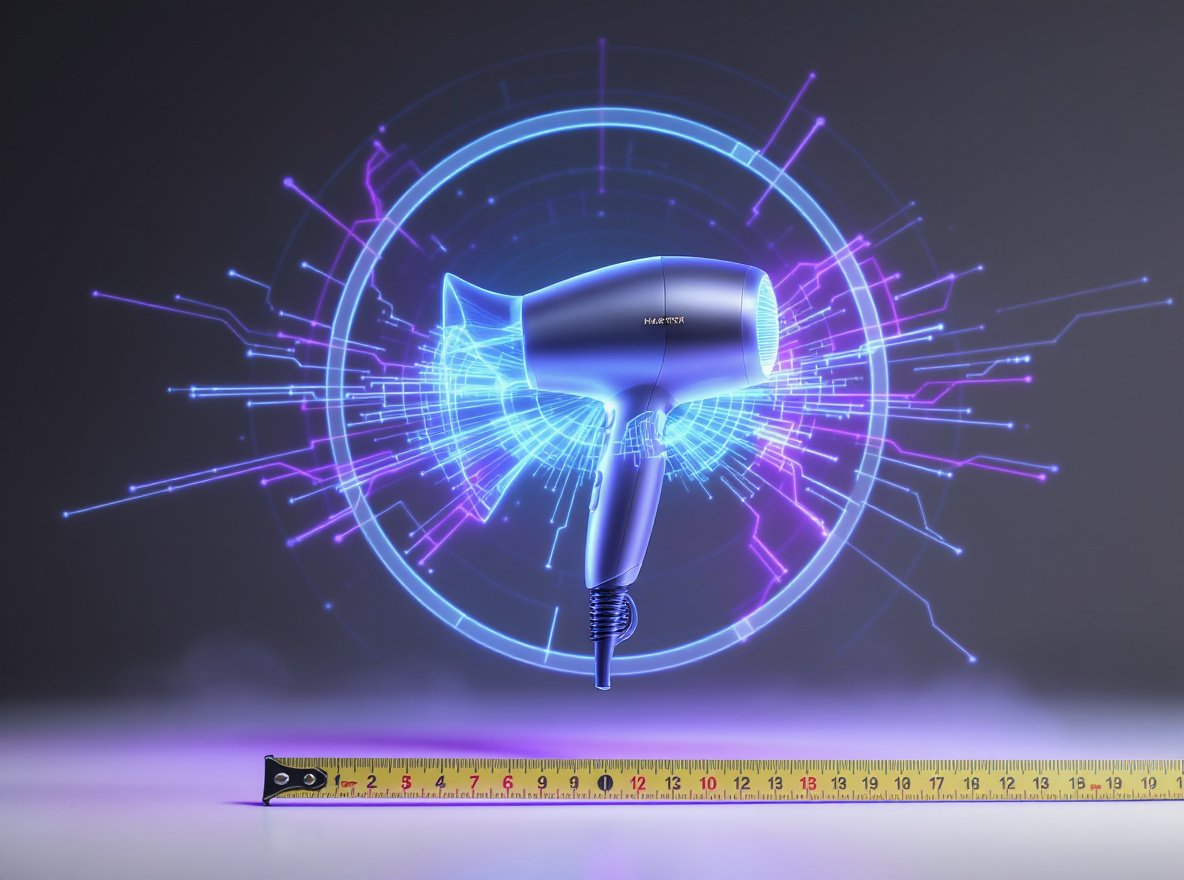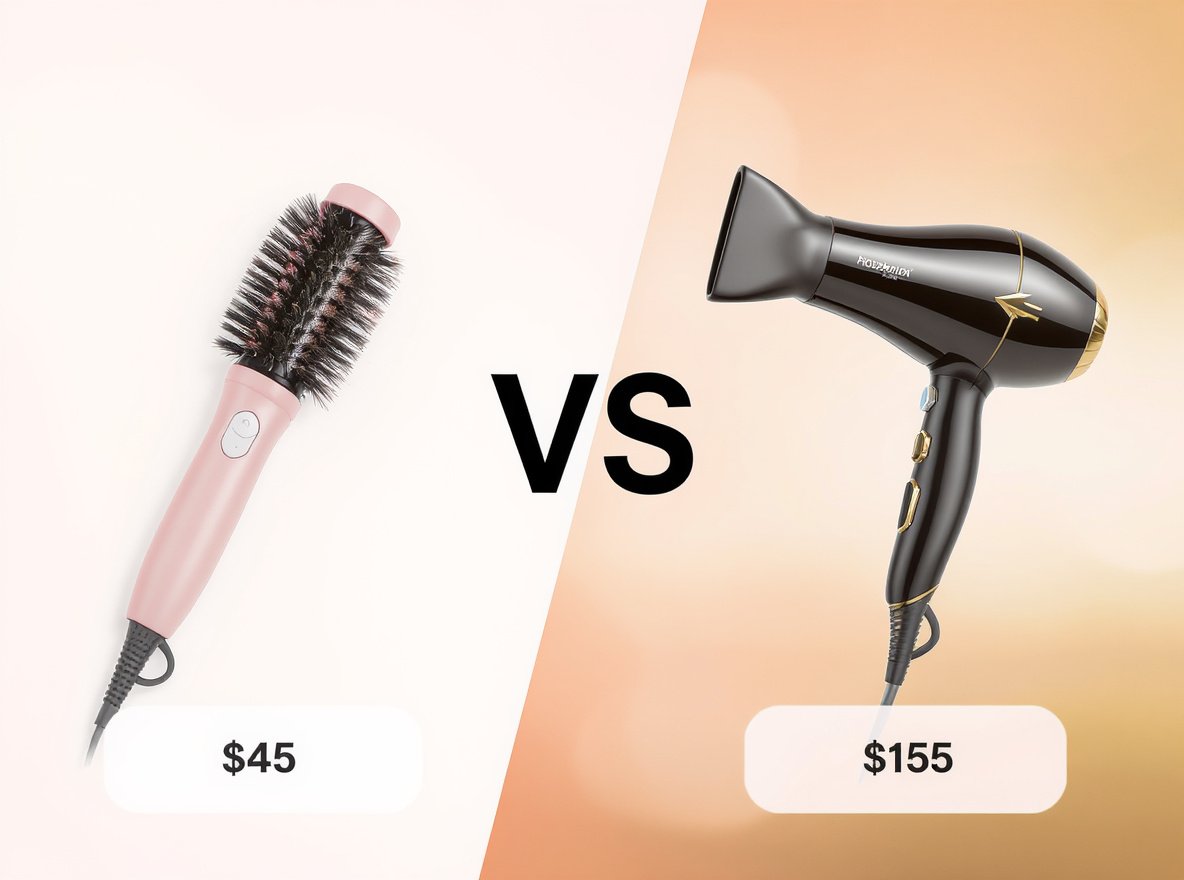Hair dryers were once simple, commodity appliances that most consumers viewed as purely functional tools. Then Dyson entered the beauty market in 2016, transforming an entire industry with revolutionary marketing strategies that created the luxury hair dryer category we know today.
When Dyson launched the Supersonic hair dryer at $400, it didn’t just introduce a new product—it fundamentally redefined what consumers expected from hair styling tools. Through premium positioning, engineering excellence, and innovative marketing that emphasized technology over traditional beauty promises, Dyson created a luxury segment that commands prices 3-4 times higher than traditional hair dryers while generating massive consumer demand.
But how exactly did they achieve this remarkable market transformation? Let’s explore the specific strategies that turned a household appliance into a coveted luxury item.
Table of Contents
ToggleWhat Made Dyson’s Entry Into Beauty Markets So Disruptive?
Understanding Dyson’s beauty market disruption requires examining their unprecedented investment in genuine innovation and problem-solving technology.
Dyson didn’t simply create another hair dryer—they reimagined the entire category through a $71 million R&D investment over four years, developing 600 prototypes to solve problems consumers didn’t even know they had. This massive investment, combined with engineering excellence over traditional beauty marketing, positioned their products as premium lifestyle accessories rather than mere appliances.

Dyson’s disruption strategy was built on several revolutionary foundations:
Engineering Excellence: The Supersonic introduced breakthrough technologies including a digital motor V9 positioned in the handle for better balance, intelligent heat control measuring temperature 20 times per second, and Air Multiplier technology for controlled airflow. These innovations addressed real consumer problems—hair damage from extreme heat, noise, and ergonomic issues.
Market Validation: The results were remarkable. Dyson sold 600,000 units in the first year versus their projected 172,000 units, representing a 3x exceeded sales projection. This success validated their strategy of competing on innovation rather than price.
Problem-Solving Focus: Rather than competing on traditional beauty benefits, Dyson consistently positioned themselves as solving problems that consumers didn’t know they had, such as heat damage and styling inefficiency.
| Traditional Hair Dryers | Dyson Supersonic | Market Impact |
|---|---|---|
| $20-80 price range | $400-569 premium pricing | Created luxury tier |
| Basic heating elements | Advanced heat protection technology | Raised performance standards |
| Generic appliance marketing | Engineering-focused positioning | Shifted consumer expectations |
| Function-focused messaging | Technology and health benefits | Expanded value proposition |
How Did Dyson’s Premium Pricing Strategy Reshape Consumer Expectations?
Dyson’s bold pricing strategy fundamentally altered how consumers perceive value in hair care tools through psychological positioning and market education.
By pricing the Supersonic at $399-$499—nearly 10 times the cost of average hair dryers—Dyson established a new premium tier that educated consumers about the value of advanced technology in beauty tools. This pricing strategy worked because it was supported by genuine innovation and positioned the product as an investment in hair health rather than just a styling tool.

The premium pricing strategy succeeded through several psychological mechanisms:
Premium Pricing Creates Perceived Value: The high price point immediately signaled superior quality and innovation. As marketing analysis shows, “Dyson employs a strategy of pricing its products high to create a perception of luxury and exclusivity.” This approach positions Dyson as a luxury brand within traditionally commodity categories.
Quality Inference from Price: Consumers often associate higher prices with higher quality, and Dyson leveraged this by ensuring their products delivered on the promise of superior performance. The company maintained that their pricing reflected the value proposition of enhanced performance and lower long-term costs.
Immediate Market Acceptance: Despite initial skepticism about a $400 hair dryer, the product became “the bestselling hair dryer in the UK within 30 days” of launch. This acceptance was driven by the tangible benefits consumers experienced, validating the premium price point.
The ripple effects were immediate and industry-wide:
- Competitors rushed to develop “premium” versions of their products
- Retailers created dedicated high-end hair tool sections
- Consumers began researching hair dryers like major appliances
- Beauty influencers started featuring hair tool technology in their content
This transformation proved that traditional commodity categories can be elevated to luxury markets through genuine innovation backed by strategic pricing.
What Role Did Technology Marketing Play in Creating the Luxury Category?
Dyson’s technology-focused marketing approach was crucial in legitimizing high prices and creating consumer demand through engineering storytelling.
Instead of relying on traditional beauty marketing focused on glamour and lifestyle, Dyson used engineering-based storytelling to educate consumers about the science behind their products. This approach transformed hair dryers from simple appliances into sophisticated beauty technology that justified premium pricing through technical education and transparent communication.

Their technology marketing strategy included several innovative elements:
Engineering Storytelling: The advertising brief for the Supersonic launch was explicit: “To create an advertising campaign that would announce Dyson’s entry into the beauty category. It had to have engineering at its heart but with a visual language that would resonate with the key target audience of women.”
Educational Content Development: Rather than traditional advertising, Dyson created extensive educational content about hair science, styling techniques, and product technology. This content positioned them as experts and thought leaders in the beauty technology space.
Transparent Development Communication: Dyson openly shared their 4-year development process, 600 prototypes, and $71 million investment, creating a narrative of dedication and innovation that justified premium pricing.
Technical Specifications in Accessible Language: The company consistently communicated the “how” behind their products, not just the “what,” explaining airflow dynamics, heat distribution science, and hair damage prevention in terms consumers could understand.
This approach achieved several critical objectives:
- Educated consumers about hair health and damage prevention
- Created perceived value through complexity and innovation
- Established Dyson as a credible authority in beauty technology
- Differentiated products based on performance rather than just aesthetics
The technology marketing approach proved particularly effective because it appealed to both early technology adopters and beauty enthusiasts who valued measurable results over traditional beauty promises.
How Did Dyson Target Professional Markets to Build Credibility?
Professional market penetration was a cornerstone of Dyson’s luxury positioning strategy, providing third-party validation crucial for consumer acceptance.
By first targeting professional stylists and salons through dedicated Professional Edition products, Dyson built credibility and endorsement from industry experts before expanding to consumer markets. This professional-first approach created aspirational appeal and provided third-party validation that supported premium pricing through expert endorsement.

The professional market strategy involved multiple strategic components:
Professional Product Development: Dyson developed a Professional Edition specifically for stylists and salon environments, featuring:
- Longer 11-foot cable for salon use
- Improved magnetic, removable, and washable filters
- Professional concentrator designed for precision styling
- Extended 2-year warranty for professional use
- Dedicated professional customer service line
Expert Validation and Endorsement: Professional stylists became key advocates and credibility sources for the brand. As one professional reviewer noted, “I generally tell my clients it’s not worth the price tag for a consumer, but worth it for a professional.” This professional endorsement created a halo effect that influenced consumer purchasing decisions.
Real-World Performance Testing: The professional strategy provided real-world validation of the product’s performance claims, as stylists used the tools daily and could attest to their effectiveness in demanding professional environments.
Salon Partnership Strategy: Dyson created “Dyson Demo” experiences where customers could try products with expert stylists, building confidence and understanding through hands-on experience.
| Professional Market Benefits | Consumer Market Impact | Long-term Value |
|---|---|---|
| Expert validation through daily use | Increased trust and credibility | Sustainable premium positioning |
| Salon partnerships and visibility | Aspirational brand appeal | Professional channel revenue |
| Stylist endorsements and recommendations | Organic marketing amplification | Reduced advertising costs |
| Industry recognition and awards | Enhanced media coverage | Strengthened brand reputation |
What Marketing Channels Did Dyson Use to Reach Luxury Beauty Consumers?
Dyson’s channel strategy was carefully designed to reach affluent consumers through premium touchpoints and innovative engagement methods.
Rather than competing in traditional mass market channels, Dyson focused on premium retailers, high-end department stores, and direct-to-consumer sales. This selective distribution strategy reinforced their luxury positioning while ensuring their products were presented in appropriate retail environments that matched their premium brand image.

Their sophisticated multi-channel approach included:
Premium Retail Partnerships: Dyson partnered with high-end retailers like Sephora, Nordstrom, and Ulta Beauty. These partnerships provided access to affluent consumers and reinforced the luxury positioning through association with premium retail brands.
Direct-to-Consumer Excellence: Dyson invested heavily in their own e-commerce platform, providing detailed product information, customer education, and premium unboxing experiences that reinforced their brand positioning.
Influencer Marketing Strategy: The brand employed a sophisticated influencer approach, working with influencers across different niches and follower counts, including collaborations with micro-influencers who sometimes generated higher engagement than macro-influencers.
Experiential Marketing Innovation: Dyson created “Dyson Demo” experiences where customers could try products with expert stylists, building confidence and understanding through hands-on experience.
Social Media Focus: Dyson leveraged platforms like Instagram and TikTok, where the styling process itself became entertainment, generating authentic user-generated content and organic brand amplification.
The channel strategy supported several strategic objectives:
- Maintained premium brand positioning through selective distribution
- Ensured proper product presentation and customer education
- Protected profit margins through controlled pricing
- Created exclusivity that enhanced desirability and brand cachet
How Did Dyson’s Innovation Messaging Differentiate From Traditional Beauty Marketing?
Dyson’s messaging strategy represented a fundamental departure from conventional beauty industry marketing through engineering-first communication.
While traditional beauty marketing focused on emotional appeals and lifestyle aspirations, Dyson used fact-based, technology-centered messaging that educated consumers about hair health and product performance. This approach attracted consumers who valued substance over style and were willing to invest in genuine innovation backed by scientific evidence.

The innovation messaging strategy included several key differentiating elements:
Performance-Based Claims: Dyson consistently provided specific, measurable benefits rather than vague promises. Their claims about heat protection, drying speed, and hair health improvements were backed by testing data and research, creating credibility through transparency.
Engineering Process Transparency: The company openly discussed their research and development process, manufacturing methods, and product testing procedures. This transparency built trust and justified premium pricing through demonstrated investment in innovation.
Technical Education Focus: Instead of traditional beauty outcomes, Dyson invested in educating consumers about hair science, thermal damage, and the engineering behind their solutions, positioning themselves as thought leaders in beauty technology.
Problem-Solving Narratives: The messaging consistently positioned Dyson as solving problems that consumers didn’t know they had, such as heat damage and styling inefficiency, rather than promising traditional beauty benefits.
Contrast with Traditional Beauty Marketing:
Traditional beauty marketing typically emphasizes:
- Aspirational lifestyle imagery and emotional appeals
- Beauty outcomes and subjective results
- Celebrity endorsements and glamour associations
Dyson’s approach emphasized:
- Technical processes and engineering excellence
- Problem identification and scientific solutions
- Performance metrics and measurable specifications
- Educational content and transparency
This differentiation helped Dyson stand out in a crowded market and appeal to consumers who valued substance over style, creating a new category of “beauty technology” that commanded premium pricing.
What Can Hair Dryer Manufacturers Learn From Dyson’s Success?
Dyson’s success offers valuable lessons for manufacturers looking to elevate their position in the hair care market through innovation and strategic positioning.
The key insight is that premium positioning requires genuine innovation backed by consistent marketing that educates consumers about value. Manufacturers cannot simply raise prices without providing corresponding improvements in performance, quality, or user experience that justify premium pricing through measurable benefits.

Critical success factors for manufacturers include:
Invest in Real Innovation: Dyson’s exponential growth from developing 5,127 vacuum cleaner prototypes to becoming a market leader demonstrates that genuine innovation requires substantial investment. This commitment to iterative improvement and breakthrough technology is essential for premium positioning.
Focus on Problem-Solving: Successful premium products must address real consumer problems. Dyson succeeded because they solved genuine issues like heat damage, styling difficulty, and inconsistent results that consumers experienced but couldn’t articulate.
Build Professional Credibility: Professional endorsement remains crucial for credibility in beauty markets. Manufacturers should invest in professional relationships and salon partnerships before targeting consumer markets to build credibility through expert validation.
Educate Rather Than Advertise: Modern consumers, especially in premium segments, prefer education over traditional advertising. Content marketing, technical explanations, and transparent communication build trust and justify premium pricing.
Sustained Investment Commitment: Dyson continues to invest heavily in R&D, with a £500 million commitment for 20 new beauty products over four years. This sustained investment approach is essential for maintaining market leadership and innovation momentum.
For manufacturers in the high-speed hair dryer space, several specific opportunities exist:
- Focus on hair health and damage prevention technology
- Develop professional-grade features for consumer products
- Create educational content about styling techniques and hair science
- Build partnerships with salons and professional stylists
- Invest in measurable performance improvements rather than cosmetic changes
The luxury hair dryer category that Dyson created continues to grow, with consumers increasingly willing to invest in technology that delivers measurable benefits for hair health and styling results.
Summary
Dyson’s transformation of the hair dryer market demonstrates how strategic marketing can create entirely new product categories through genuine innovation and premium positioning. Through a $71 million R&D investment, engineering-focused messaging, professional market penetration, and selective distribution, Dyson established the luxury hair dryer segment that continues to drive industry growth and consumer expectations today.

For manufacturers looking to compete in this space, the lesson is clear: premium positioning requires genuine innovation, consistent messaging, and a commitment to educating consumers about measurable value rather than traditional beauty promises.
Ready to explore how advanced hair dryer technology can elevate your product portfolio? Discover our P1C high-speed hair dryer or browse our complete professional hair dryer collection. Contact us today to discuss wholesale opportunities and learn how our innovation can help you succeed in the luxury hair care market that Dyson pioneered.



